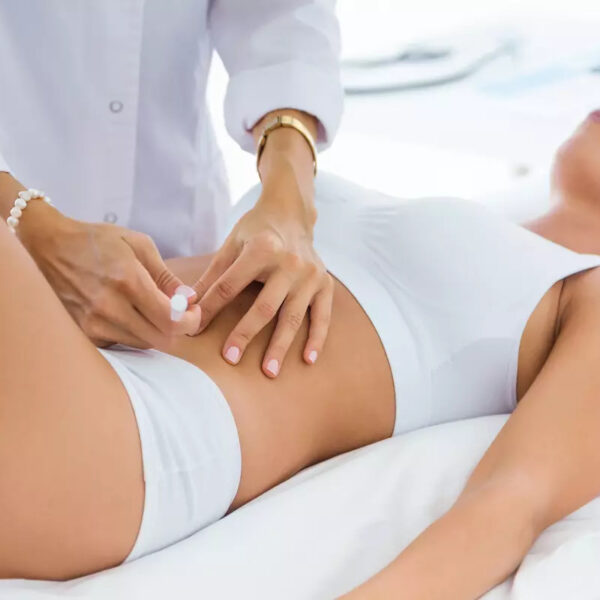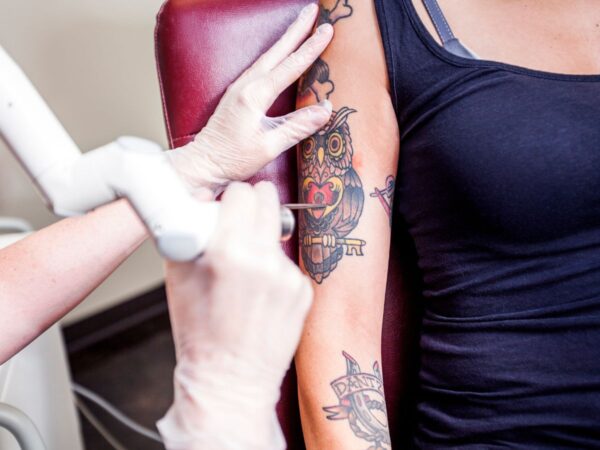Tattoo removal is an application that has increased appeal nowadays. The reasons can be purely professional (candidates in military schools-police-coastal police, flight attendants) but also social.
Many times, however, the person himself regrets it at some point in his life or immediately after the application if the result was not what they imagined.
With the evolution of lasers we can offer significant help in this difficult goal of tattoo removal.
Tattoo removal with specialized lasers
Before the age of lasers in dermatology, we attempted to remove tattoos with destructive methods such as skin scraping, strong chemical peels (TCA), cryotherapy, and surgical excision.
Lasers gave a new impetus to this application. By using the Q-Switched Nd YAG laser, a laser specially made to treat the pigment (color) contained in a tattoo, it is possible to treat almost all tattoo colors, without causing burns or unsightly scars on the patient's skin.
This laser can and does selectively treat the different colors of which a tattoo can be composed, leaving intact the adjacent tissues with a process called selective photothermolysis (as opposed to non-specialized lasers, e.g. CO2 surgical lasers, fractional, skin regeneration laser, Alexandrite laser, etc.) Only in this way can the best aesthetic result be achieved.
The Q-Switched YAG laser produces a beam of light, which is selectively absorbed by the grains of the tattoo pigment. This causes the pigment to break down into tiny pieces, which are recognized by the body's defense cells (phagocytosed) and then slowly eliminated through the lymphatic system (natural way of removing waste from the body). The process takes several weeks, which is why more than one session is required.
How long does a Q – Switched YAG laser tattoo treatment session take?
The duration of the application is usually 15 to 30 minutes and depends on the size of the tattoo. To this time we should add another 30-45 minutes if local anesthesia is performed using xylocaine anesthetic cream.
Before & After Treatment
You can see the course of each treatment in the slider below. By pressing the arrows at the bottom you can see the result per session

First session
At vero eos et accusamus et iusto odio dignissimos ducimus qui blanditiis praesentium voluptatum deleniti atque corrupti.

Second session
At vero eos et accusamus et iusto odio dignissimos ducimus qui blanditiis praesentium voluptatum deleniti atque corrupti.

Third session
At vero eos et accusamus et iusto odio dignissimos ducimus qui blanditiis praesentium voluptatum deleniti atque corrupti.
Is the treatment painful?
With the use of local anesthesia, the patient feels only small pinches on the surface of the skin, which are usually not painful. Local anesthesia can be done using a local anesthetic cream, although we usually prefer injectable xylocaine (alone or with adrenaline) which has a much better effect and immediate onset of action
Many times in parallel with the application of the laser we use cold air provided by the cryo6 zimmer and it offers additional anesthesia in the area where the application is made
Instructions we give before applying laser tattoo removal
Avoid exposure to the sun or artificial light sources (solarium) for the previous 4 weeks. If the area where the tattoo is located is covered with hair, shave the area the day before.
What do we see immediately after treatment? Instructions for after application.
The part of the skin containing the tattoo is temporarily slightly swollen for an hour or two, immediately after the treatment, and there may be whitish discoloration and small blisters with minimal serous blood content which will then form crusts (these crusts also contain some of the pigment of the tattoo. They should not be removed by force because there is a risk of creating a scar).
Avoid getting the area wet for the first 24-48 hours and then shower carefully so as not to injure the area (which contains crusts).
With the use of an appropriate antibiotic-anti-inflammatory ointment, the skin irritation subsides within the next few days and the moist healing process is facilitated. During the first days, we also cover the area with a pad (this is necessary for the first 72 hours, while after that we can leave the area open). This is followed by the use of a moisturizing-regenerating ointment for the next period of time until the next session. We see the color of the tattoo fade gradually and the texture of the skin is completely restored. Then we are ready for the next session (around 4 weeks time)
During healing, it is best to avoid very tight clothing in the area to avoid friction. We also avoid the use of perfumes in the area as well as anything that offers intense heat (very hot water in the bathroom, sauna-hammam, sunbathing or solarium and of course swimming in the sea or pool (avoid soaking)
This depends on the type of pigment (quality and color tone), the amount of pigment and the depth it has been placed into the skin. Amateur tattoos may require four-six sessions if a correct biodegradable surface pigment has been used, while there are cases where the color did not fade with application because the pigment (ink containing metal ions) was unsuitable. Professional tattoos can take six to eight treatments and sometimes more. Black and blue tattoo colors respond better, while reds fade more slowly, green tattoos fade even more slowly and difficult and may need more treatments. The yellow color of the tattoos also does not respond easily. Sometimes, tattoo pigment can be embedded so deeply in the skin that it is impossible for the body to remove it completely, although significant fading of the color can be achieved.
Old tattoos (over 5 years old) in which the color has faded require fewer sessions than a new one with vivid colors.
After the application, he can immediately return to his daily activities with very little care of the area where the application was made.
Avoid getting the area wet for the first 24-48 hours and then shower carefully so as not to injure the area (which contains crusts). We use antibiotic-anti-inflammatory ointment for the first 72 hours with the area closed with a special pad (to avoid infections). Then we can have the area open and we use a moisturizing-regenerating ointment for the next period until the next session
The area where the laser tattoo removal session took place is an area that has received micro trauma and is therefore at an increased risk of developing infections. Post-inflammatory hyperpigmentation (spotting) can also develop in the same area, which is more often seen in people with dark skin color or hypopigmentation (white spot). Also, in people who have a predisposition to make hypertrophic scars and keloids, laser tattoo removal treatment also carries this risk (which is, of course, much smaller compared to classic destructive methods such as skin scraping).
With the use of this specialized type of laser, the possibility of creating a scar is extremely low but cannot be completely excluded. At this point, it is crucial to correctly follow the instructions we give after the laser application (such as not touching the crusts that are created immediately after the treatment). In people who have a history of a predisposition to the creation of hypertrophic scars and keloids, we either avoid doing the application, or we follow more conservative settings, in which case we will need more treatment sessions.
In our clinic we have the most modern and sophisticated Q-Switched Nd YAG laser 1064/532nm (KTP) the Q-Clear of the American laser glue company LightAge. Also, we have a lot of experience in this particular application. In cases where the tattoo contains difficult colors (green, red, yellow) we perform a free test session on a part of the tattoo to make sure we can be effective during application.

